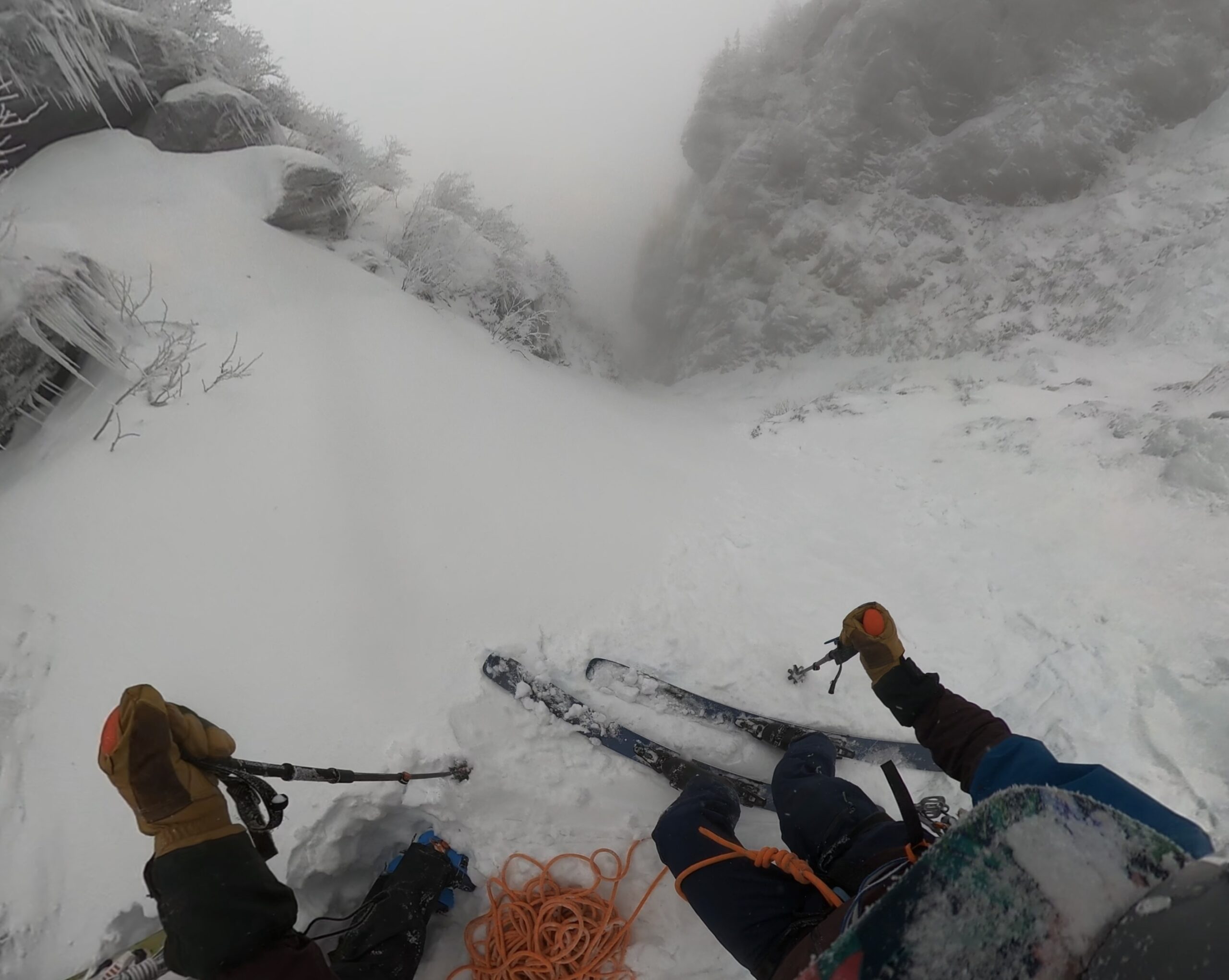Posted March 5th, 2024 @ The Newport Daily Express, VT
Becoming a Ski Mountaineer
Backcountry skiing makes its transition from ordinary ski touring to ski mountaineering when it can no longer be accomplished with just skis, climbing skins, and boots alone. Technical equipment such as ropes, ice climbing gear, and the skill to use them become essential.
The techniques and knowledge of a ski mountaineer provide a backcountry skier with the tools needed to navigate mountain terrain such as steep ice and glaciers. These common barriers add to the adventure—and technical complexity—of incredible ski terrain in big mountains.
This season, a core focus of mine has been to grow my skillset as a ski mountaineer. To do so requires that skills from a multitude of disciplines come together. Skiing, rock/ice climbing, snow science, and rope technique are just a few of the components. It’s a mixture of reading, research, practice at home, consulting with professionals, and, most importantly, field application that grows into the experience needed.
Taking to the field to practice. My good friend, Noah Johnson, and I recently tried our hand on a ski mountaineering line in Smuggler’s Notch, VT known as Hidden Gully.
Noah, a senior at UVM, is on track to becoming a certified ski guide. Studying the subject full-time alongside a business degree means he’s teeming with ski mountaineering knowledge. He’s always ready for an adventure where we can learn from each other.
Hidden Gully, a 700-foot-tall narrow line with rock walls on either side, is typically done just as an ice climb. Sandwiched between its ice cliffs though, and inherently difficult to access, are several snowfields.
Naturally, as skiers first, it only made sense that we’d try to ski those stretches of snow. Ideal terrain for a practice ski mountaineering mission. First, though, we’d have to ice climb.
Laden down with skis on our backs, crampons, ice axes, and a rope for fall protection the two of us began the climb, It was a first for us both, as neither of us had ice climbed with that much weight before.
Noah led the way placing ice screws at regular intervals. These serve as points for the rope to hold onto the cliff in the event of a fall. As he climbed, I fed out rope keeping him “on belay” and able to stop a fall. Once he’d reached the top of a section our roles would swap, and I would climb removing the ice screws as he kept me on belay from above.
The real fun though began once we’d reached the top of the gully and could finally put on our skis. Still roped up and secure (as we were right above cliffs) we skied the steep powder snow one at a time going anchor to anchor. Skiing on belay, as this is known, is an advanced technique and one we were looking to practice further. The turns were incredible with the exposure adding to the excitement.
For the sections of vertical ice, we “rappelled” or descended the rope leaving our skis on. Another skill we were glad to practice. Three sections of snow and two rappels later we’d reached the bottom.
Smiles abound, this marked our first technical ski mountaineering line in VT.
The Cascade Project
“Volcano Season”, to a ski mountaineer, is what spring in the Pacific Northwest is known for. Located along the Pacific Ring of Fire in the states of CA, OR, WA, and Canada’s BC, rise a seemingly endless chain of snow-capped volcanoes. Their high elevation and glaciated peaks, reaching as high as 14.4k with Mount Rainier in WA, mean snow well into the summer months.
While many are skiable year-round, spring means often sunny days, increasingly stable snow, and reduced glacial hazards, making it the perfect time of year for big days on these big mountains.
Starting in CA on May 1st, I’ll be kicking off what I’m calling “The Cascade Project”.
In a monumental effort of fitness, skill, planning, logistics, and luck of weather and conditions, for 30 days, I’ll be aiming to ski as many of the Cascade Volcanoes as I’m able. Additionally, camping at the summits, I can.
With 32 Volcanoes on my list, only time will tell how many I make it to. The goal isn’t a clear-cut number; rather, the goal is to get out there, to see what, with the experience and training I’ve accumulated, is possible. All while staying safe and enjoying my time in the mountains.
No matter how many I make it to, it’s going to be one incredible adventure. Now, for more planning, training, and logistics.

